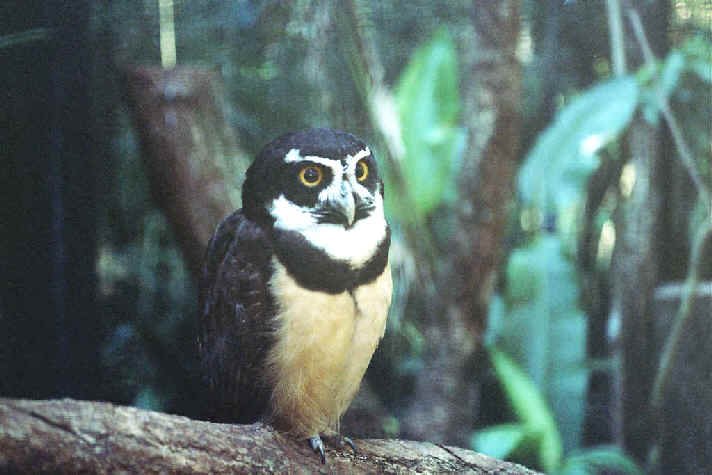
E-mail: font@focusonnature.com
Phone: Toll-free in USA 1-888-721-3555
or 302/529-1876
 |
PO
Box 9021, Wilmington, DE 19809, USA E-mail: font@focusonnature.com Phone: Toll-free in USA 1-888-721-3555 or 302/529-1876 |
 BIRDS
and
BIRDS
and
OTHER WILDLIFE
during
Focus On Nature Tours
in northern
Costa Rica
1991 thru 2015
A List compiled by Armas Hill
PHOTO AT RIGHT: a
SPECTACLED OWL
681 species of birds have
cumulatively been found during 32 FONT birding and nature tours in Costa Rica.
Included in those 681 species, are 605 that have been
found during FONT Northern Costa Rica Tours,
and they are listed below.
The number, to the right of the English bird name, indicates the number of
FONT tours
during which
the bird has been found (out of 27).
Not all tours have been to
the same areas, so individual tour-lists have varied.
In the following list, the latest taxonomy is incorporated noting subspecies in
Costa Rica.
Codes:
(t): a globally threatened or
rare species, designated by Birdlife International
(t1): critical
(t2): endangered
(t3): vulnerable
(nt): a near-threatened species
globally
(i): introduced species
(CRe): endemic in Costa Rica
(CRr): rare in Costa Rica
Links:
A
Complete List of Costa Rica Birds (with some photos)
Mammals of Central America (with some photos)
A List of Central American Butterflies and Moths, in 6 parts (with some photos)
Previous FONT Costa Rica Tour Highlights
Upcoming
FONT Birding & Nature Tours in Central America
Directory of Photos in this Website
Birds:
Crane Hawk ______ 5
Geranospiza caerulesens nigra (the single member of its genus)
![]()